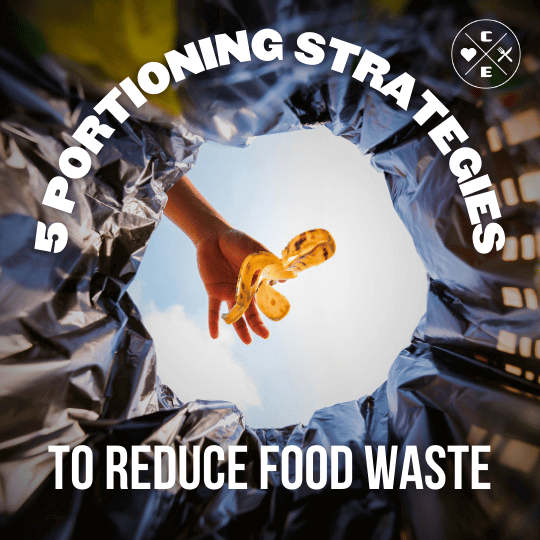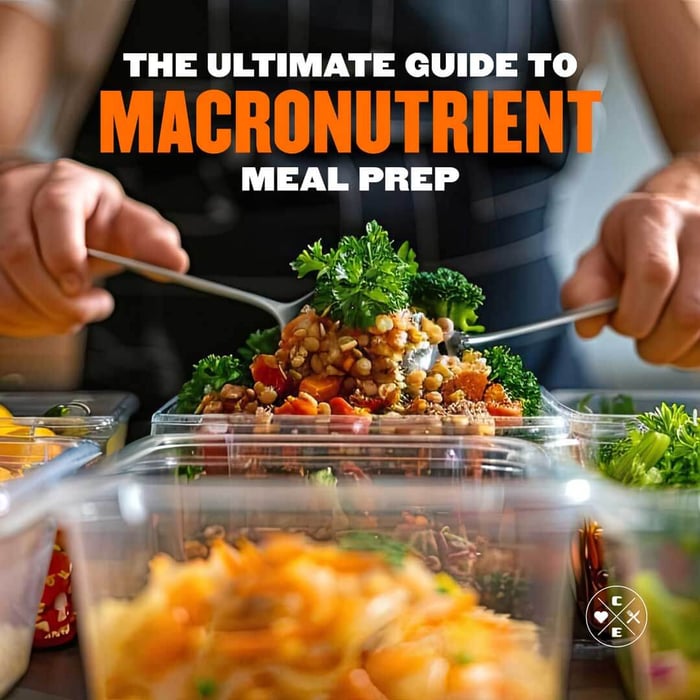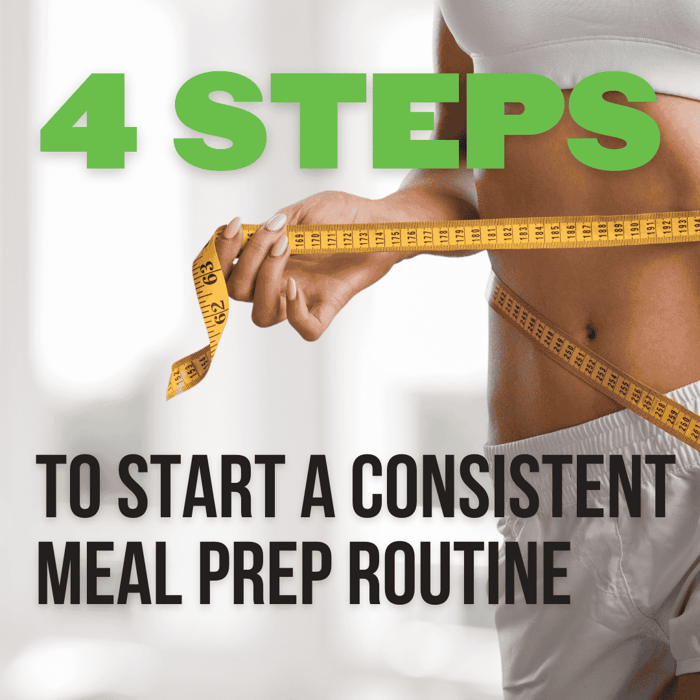5 Portioning Strategies to Reduce Food Waste

Jason Nista
Nutrition
|
Healthy Recipes
|
Healthy Lifestyle
01/14/2025 7:49am
8 minute read
Table of Contents
Food waste is a huge issue, costing the average American family $1,500 annually and contributing to environmental harm. But you can make a difference with these simple strategies:
- Plan Meals Ahead: Create weekly menus, shop with a list, and include leftovers in your plan.
- Control Portion Sizes: Use tools like kitchen scales and start with smaller servings.
- Make Use of Leftovers: Transform them into new meals or store them properly for later use.
- Store Food Correctly: Keep your fridge at 40°F and organize items to extend freshness.
- Adopt Zero-Waste Cooking: Use scraps for stocks, sauces, or composting.
These steps can cut food waste by up to 50%, save money, and reduce landfill emissions. Let’s dive into the details!
Prepare and Cook Perfect Portions to Reduce Food Waste
1. Plan Meals Ahead
Planning your meals in advance is a smart way to cut down on food waste, save money, and shop more efficiently.
Start by creating a weekly menu and a detailed shopping list. This helps you stick to buying only what you need, avoiding unnecessary purchases. When planning, keep these tips in mind:
- Shop Wisely: Focus on seasonal produce for better quality and lower costs. Check your pantry to avoid buying items you already have and prioritize using older ingredients first.
- Portion Control: Measure ingredients carefully to avoid cooking more than necessary, which helps prevent leftovers from going uneaten.
If you’re looking for convenience, services like Clean Eatz Kitchen offer pre-portioned meals, taking the guesswork out of cooking and helping you reduce waste [3].
To make meal planning even more effective:
- Include leftovers in your weekly menu to avoid throwing out extra food.
- Track how much food you waste each week and tweak your portions or meal plans as needed.
Once your meals are planned, focus on portion sizes to make sure nothing goes to waste.
2. Control Portion Sizes
Managing portion sizes is a simple way to cut down on food waste and encourage better eating habits.
Tools and Tips for Accurate Portions
Use tools like kitchen scales, measuring cups, or portion-specific items like rice scoops to ensure accuracy. Start with smaller servings on plates, allowing people to take more only if needed.
Here’s a quick reference for common portion sizes:
| Meal Component | Suggested Portion | Tool to Use |
|---|---|---|
| Grains/Pasta | 1/2 cup cooked | Rice scoop |
| Protein | Palm-sized (3-4 oz) | Kitchen scale |
Customizable Solutions for Portion Control
At home or dining out, controlling portions helps prevent waste. Restaurants can offer smaller or adjustable portions to cater to different appetites. Meal delivery services, such as Clean Eatz Kitchen, simplify this by providing pre-portioned meals, making it easier to avoid excess.
Why It Matters
By reducing food waste, portion control also lowers methane emissions from landfills, contributing to a healthier planet [4]. Plus, it can help cut down on grocery bills.
Even with careful portioning, leftovers happen - let’s explore how to use them effectively.
3. Make Use of Leftovers
Using leftovers to create new meals is a smart way to cut down on food waste while keeping your meals interesting.
Turn Leftovers Into New Dishes
Give leftovers a second life by transforming them into entirely new meals. For example, roasted vegetables can become the base for a frittata or a quick stir-fry. Got extra rice? Use it to whip up fried rice with some added protein and veggies. This not only reduces waste but also keeps your meals varied [4].
| Original Meal | Next-Day Dish Ideas | Safe Storage Time |
|---|---|---|
| Roasted Vegetables | Frittata or Stir-fry | 3-4 days |
| Cooked Rice | Fried Rice or Rice Bowls | 4-5 days |
| Grilled Chicken | Salads or Wraps | 3-4 days |
Store Leftovers Wisely
Keep leftovers in airtight containers and follow the 'first in, first out' rule to ensure older items are used first. Label each container with the date to easily track freshness.
Plan Meals Around Leftovers
When planning your weekly meals, think about how you can reuse components for the next day. For instance, tonight’s dinner could double as tomorrow’s lunch with a little creativity.
Avoid Common Leftover Pitfalls
Leftovers can often get overlooked or feel unappealing after a day [4]. Here’s how to tackle that:
- Make Them Visible: Store leftovers in clear containers at eye level in your fridge.
- Do Regular Checks: Take inventory of your fridge before planning meals to avoid forgetting what you already have.
sbb-itb-1989a25
4. Store Food Correctly
Storing food the right way can dramatically reduce waste while keeping it fresh and safe to eat. In fact, proper storage can cut household food waste nearly in half [1].
Keep Temperatures in Check
Set your fridge to 40°F (4°C) or lower and your freezer to 0°F (-18°C). These temperatures slow bacterial growth and help your food last longer [2].
| Food Type | Storage Location | Recommended Temperature |
|---|---|---|
| Fresh Produce | Crisper Drawer | 40°F (4°C) |
| Cooked Meals | Main Shelf | 40°F (4°C) |
| Frozen Meals | Freezer | 0°F (-18°C) |
Organize Smarter
Use clear, airtight containers to make food easier to identify and keep it fresh. Follow the 'first in, first out' rule: place older items at the front and newer ones in the back. This simple habit helps you avoid wasting food that gets forgotten [2].
Handle Produce Wisely
Some fruits, like apples and bananas, produce ethylene gas, which can speed up spoilage in other foods. Keep these away from sensitive items like leafy greens to extend their freshness [1].
A Real-World Example
Clean Eatz Kitchen offers pre-portioned, frozen meals that highlight the benefits of proper storage. These meals stay fresh longer and help reduce waste [3].
5. Adopt Zero-Waste Cooking
Even with the best planning and storage, some food scraps are bound to happen. Zero-waste cooking focuses on using those scraps creatively, cutting down waste even more. The United Nations Food and Agriculture Organization (FAO) reports that a third of all food produced worldwide goes to waste. By adopting zero-waste cooking, households can potentially cut food waste in half.
Get Creative with Leftovers
Use every part of your ingredients by finding new ways to repurpose scraps and leftovers. For example, vegetable peels and herb stems can be turned into flavorful stocks or sauces. Leftover grains or stale bread? Perfect for making croutons or breadcrumbs to enhance soups and casseroles. This method not only reduces waste but also adds variety and depth to your meals.
| Food Part | How to Use It | Added Value |
|---|---|---|
| Vegetable Peels | Stocks and Broths | Packed with nutrients, boosts flavor |
| Herb Stems | Infusions, Sauces | Adds a rich taste, minimizes waste |
| Fruit Rinds | Natural Flavoring | Cost-free seasoning, full use of produce |
Having the right tools, like freezer-safe containers and kitchen scales, makes zero-waste cooking easier by helping you store ingredients properly and measure portions accurately. Plus, keeping food scraps out of the trash reduces methane emissions from landfills. For the scraps you can’t use, composting is a great option - it turns waste into nutrient-rich material for your garden.
"Zero-waste cooking can cut household food waste by up to 50%, according to studies." [4]
Conclusion
Cutting down on food waste is easier than it might seem. By making a few practical changes, like planning meals, controlling portions, storing food correctly, and trying creative recipes, you can significantly reduce waste - potentially by up to 50%. These steps not only save money but also help the environment. Services such as Clean Eatz Kitchen, which offers pre-portioned meals, can make the process even simpler [3].
| Impact Area | Benefit |
|---|---|
| Environmental | Lowers landfill emissions |
| Financial | Saves money on groceries |
| Practical | Makes meal planning easier |
| Responsible Habits | Encourages mindful eating |
The FAO reports that one-third of all food produced globally is lost or wasted [1]. Tackling this issue at home can lead to a positive ripple effect, contributing to a healthier planet and a more mindful approach to food.
FAQs
Here are answers to some common questions about portioning and preventing food waste.
How can portion control help reduce food waste?
Portion control relies on three main measurement methods:
| Method | How It Works | Advantages |
|---|---|---|
| Count | Count individual items (e.g., eggs, fruits) | Easy and requires no tools |
| Volume | Use cups, spoons, or ladles | Ideal for measuring liquids |
| Weight | Use a kitchen scale | Best for precise solid measurements |
Pick the method that suits the ingredient. For example, use a scale for proteins, volume tools for liquids, and counting for items like fruits or eggs. This approach not only minimizes waste but also keeps portions consistent.
How do I determine the right meal portions?
The plate method is an easy way to portion meals. Divide your plate into sections as follows:
| Section | Portion Size | Examples |
|---|---|---|
| Vegetables | Half the plate | Leafy greens, roasted veggies |
| Protein | One-quarter | Lean meat, fish, legumes |
| Carbohydrates | One-quarter | Whole grains, starchy veggies |
| Healthy Fats | 1-2 tablespoons | Oils, nuts, seeds |
This method ensures balanced meals while helping to avoid over-serving.
Related Articles
How Meal Delivery Supports Healthy Habits
6 minute read
Ultimate Guide to Macronutrient Meal Prep
8 minute read
4 Steps to Start a Consistent Meal Prep Routine
8 minute read


